Surprising Signs You’ve Already Had COVID
"Long haulers" report a wide variety of painful side effects from COVID-19.

Ever since COVID-19 reared its ugly head and upended our world, long-lasting symptoms of the virus have been varied and hard to pinpoint—until researchers finally pinned them down. “A survey conducted by Dr. Natalie Lambert of Indiana University School of Medicine and Survivor Corps analyzed the long-term experiences COVID-19 survivors are having with the virus. The COVID-19 ‘Long Hauler’ Symptoms Survey Report identified 98 long-lasting symptoms.” Additionally, a brand new study, published in JAMA, coordinated through the NIH’s RECOVER initiative, identified the most common symptoms. Click through from least common to most common from both surveys to see if you’ve experienced any.

Syncope is when you faint or pass out, usually due to a temporary drop in blood flow to the brain, reports the Cleveland Clinic. One study published in the journal HeartRhythm Case Reports finds syncope may be the presenting symptom of a COVID-19 infection, even in those who are asymptomatic. “Recognizing this possibility is of extreme importance, especially in the initial phase of COVID-19 infection,” warn the researchers.

When lymph nodes throb or swell, it’s a sign of trauma around the neck area, an infection, or a bacterial illness related to a cold or sore throat, reports HealthLink British Columbia. COVID-19 is generally known as a respiratory virus that can also affect your throat and sinuses.

Your thyroid is an essential element to your body’s proper functionality. According to Informed Health, it “plays a major role in the metabolism, growth and development of the human body.” It does this by releasing the perfect amount of thyroid hormones at the perfect times. Some COVID-19 sufferers report having elevated thyroid levels as a long-lasting symptom of the virus.

Anemia is “a condition in which you lack enough healthy red blood cells to carry adequate oxygen to your body’s tissues,” says the Mayo Clinic. The most common type of anemia is associated with not getting enough iron. The condition makes you feel tired and weak. In some cases, it may even cause chest pain and dizziness, which are common long-lasting symptoms of coronavirus.

The symptoms of herpes, Epstein-Barr Virus (EBV), and trigeminal neuralgia are varied and may include fatigue, inflamed throat, fever, and facial pain. These are also common symptoms of COVID-19 and 38 sufferers who participated in the survey reported experiencing symptoms of these conditions after the virus was gone.

GERD is acid reflux and it’s commonly known to cause excessive salivation, or drooling. According to University of Florida Health, trauma or infections in the throat, such as sinus infections or swollen adenoids, can cause GERD, which may lead to drooling.

Scientists are studying the rare but potentially severe personality changes that COVID-19 may cause in patients. According to an article published in Science News, symptoms related to the brain are often overlooked as medical professionals focus on the physical aspects of the virus. However, depression, personality changes, and confusion are some long-lasting symptoms that some COVID-19 sufferers may experience.

Thrush is small, white lesions inside your mouth caused by an imbalance of bacterial growth, more specifically an overgrowth of Candida, according to Cedars-Sinai. Some people are more prone to developing thrush but it may also be common with COVID-19 survivors. Since the virus affects your respiratory system and throat, imbalances in the mouth and tongue may also occur.

Your hormones are important because they regulate your appetite, mood, sexual function, and body temperature. According to Women in Balance Institute, a hormone imbalance may be caused by stress, an unhealthy lifestyle, or a buildup of toxins in the body. COVID-19 sufferers may experience this imbalance as the virus wreaks havoc on their respiratory system and as their immune system works hard to fight it off.

A urinary tract infection occurs when germs get into the urethra and begin to spread throughout the urinary tract, says to John Hopkins Medicine. One study published in Elsevier Public Health Emergency Collection “found a potentially dangerous overlap of classical urinary symptoms and the as yet not fully described symptoms of COVID-19.” Urinary frequency and the virus may be related, which explains its potential cause of UTIs in patients.

Kidney issues, including protein in the urine, was a long-lasting symptom of COVID-19 for 47 survey participants. The specific ways the virus affects kidneys isn’t known yet, but according to John Hopkins Medicine, it may invade kidney cells or the low levels of oxygen the virus causes may be what contribute to these long-lasting kidney problems.

While it’s not a serious issue, dry scalp and dandruff can be uncomfortable and embarrassing. According to Cedars-Sinai, dandruff can be caused by changes in hormones, so it makes sense that it’s related to the virus.
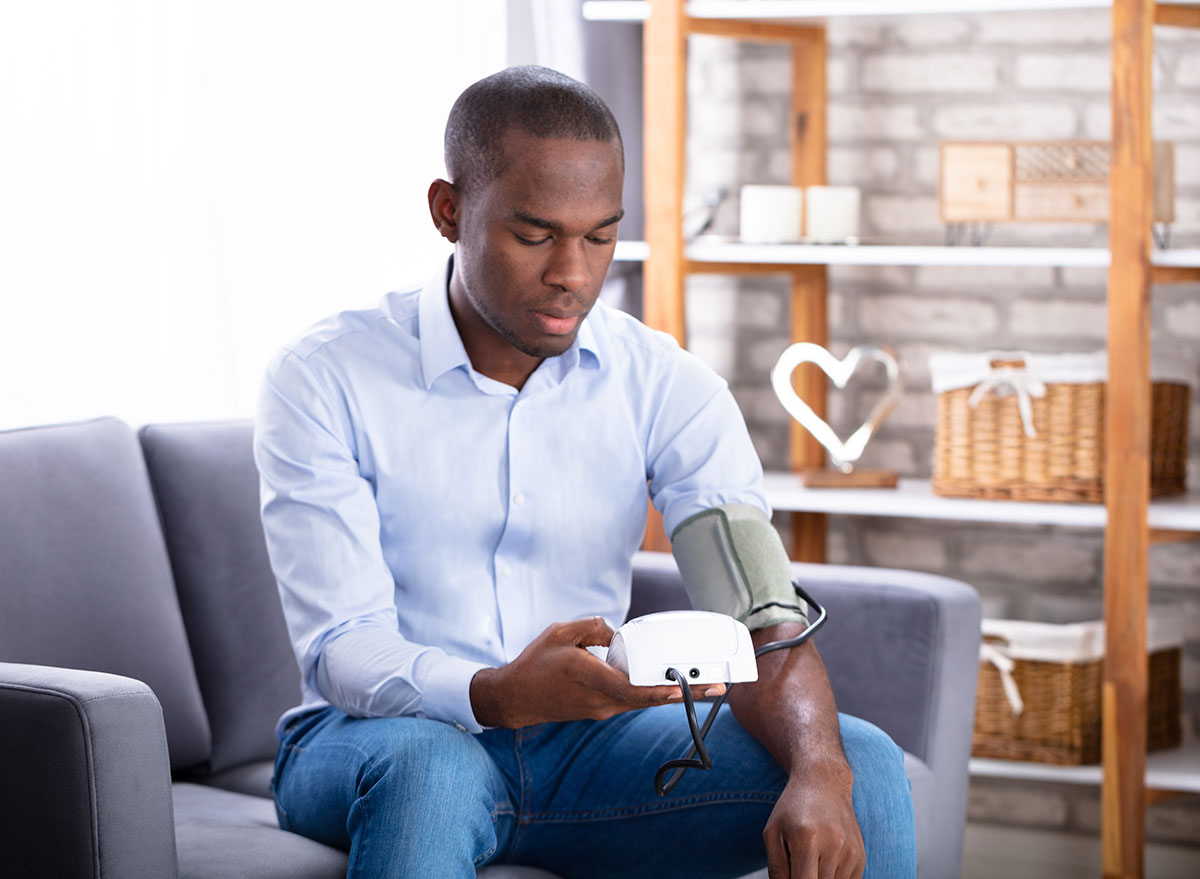
There are many causes of low blood pressure, such as genetics, your diet, or dehydration. According to the Mayo Clinic, low blood pressure is also related to infections and hormone fluctuations, which is why it may be a long-lasting symptom of COVID-19.
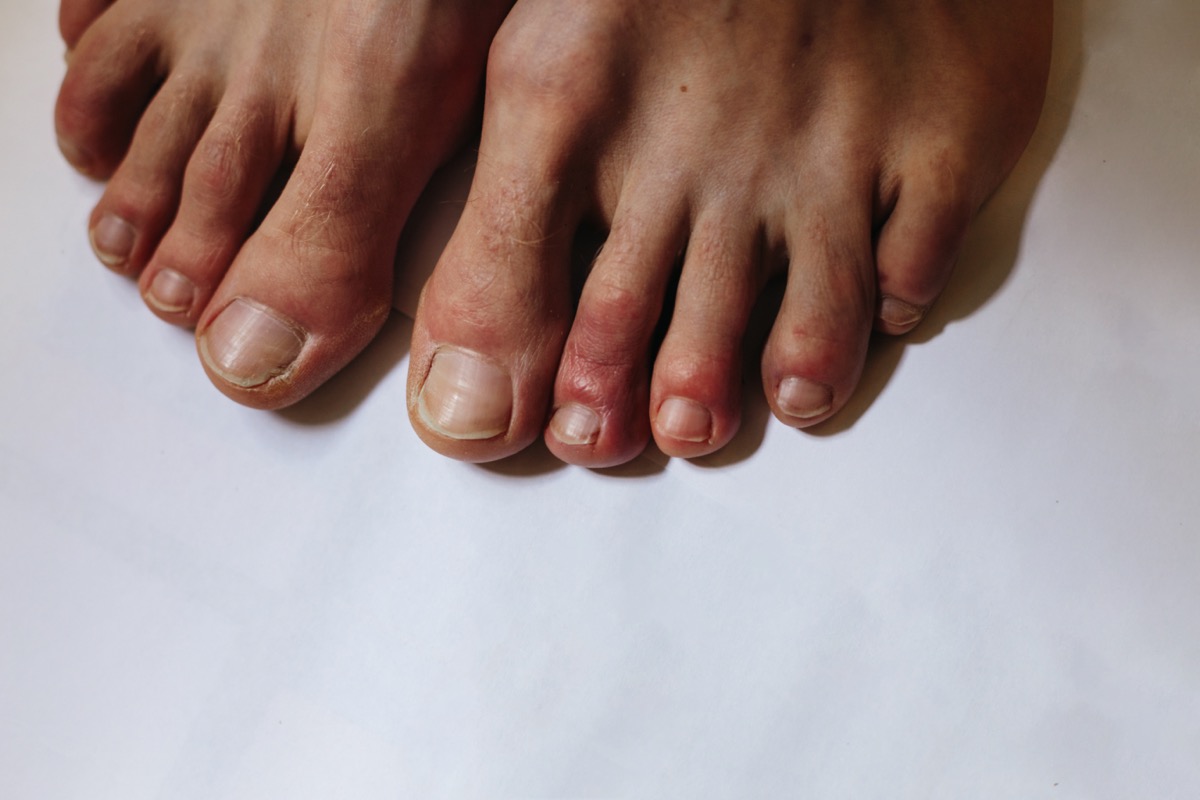
“COVID toes” are a symptom of the virus that may not be as common as the other symptoms, such as cough or fever. COVID toes occur when the toes develop a rash or lesions. According to Dr. Humberto Choi, MD, from the Cleveland Clinic, rashes on the skin are common with viral infections such as COVID-19. The survey found that 59 participants had this strange side effect after being infected with coronavirus.
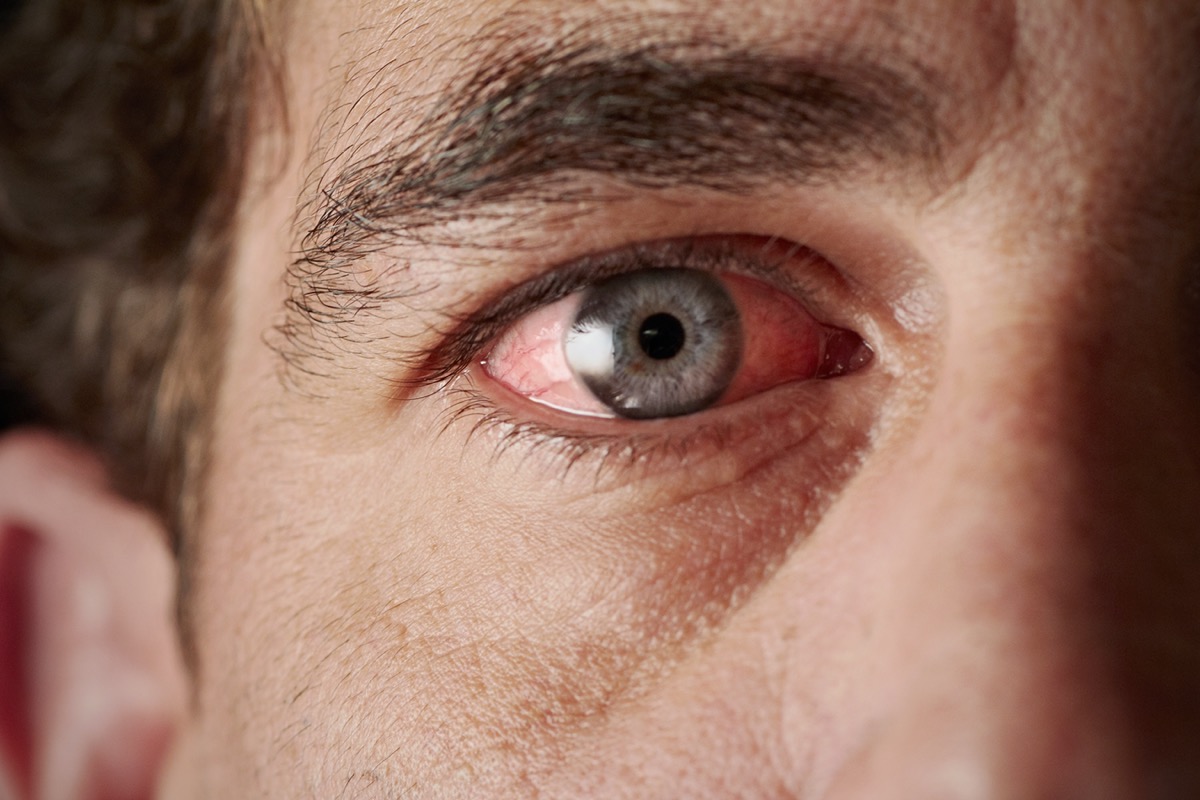
According to the University of Miami, it’s possible that coronavirus could cause an eye infection, such as conjunctivitis, also known as pinkeye. The American Academy of Ophthalmology concludes that styes are caused by bacterial infections, which could explain the relationship to this eye condition and the virus.

Foot pain can be caused by a number of ailments, such as corns, plantar fasciitis, or achilles tendon injuries. “Covid toes” may contribute to this pain since some patients can have trouble walking or sleeping due to lesions on their toes. In most cases, this strange symptom goes away so the foot pain should also subside.

A goiter is an “abnormal enlargement of the thyroid gland,” according to the American Thyroid Association. While a goiter doesn’t necessarily mean the thyroid isn’t functioning correctly, it does indicate that there’s a potential hormonal imbalance causing the thyroid gland to grow abnormally. 70 survey respondents dealt with a goiter after COVID-19, possibly due to the hormonal effects the virus has on the body.

Cracked or dry lips can occur in especially cold or hot weather or may be a sign of dehydration. When a virus like COVID-19 takes hold, dry lips may also occur because viruses are likely to cause dehydration. The American Academy of Dermatology suggests using lip balm, drinking plenty of fluids, and refraining from picking at the dry skin to get this symptom to go away.

COVID-19 is a respiratory virus so it’s no wonder those who contracted the illness feel a cold or burning sensation in their lungs. However, this symptom may last longer than the virus since 74 survey participants reported this feeling after coronavirus was gone. An article published in NBC News concludes that many COVID-19 sufferers felt this “slow burn” for a while, until it either worsened and was treated or went away completely.
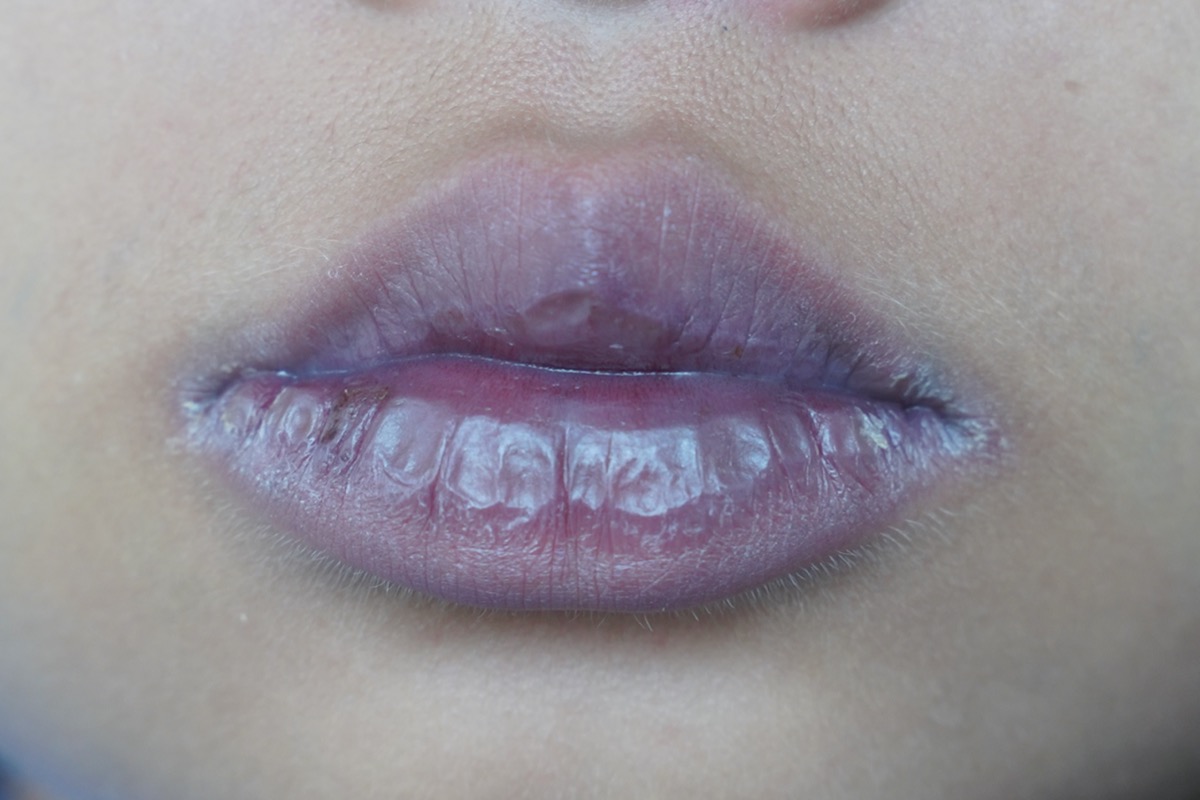
According to the Centers for Diseases Control and Prevention (CDC), bluish lips or face is an emergency of COVID-19. When your lips turn blue, it’s a sign your blood oxygen has dipped to extreme levels. The survey found that 77 participants claimed they experienced low blood oxygen after contracting coronavirus. One reason for this is that lung capacity may not have fully recovered from the respiratory virus.
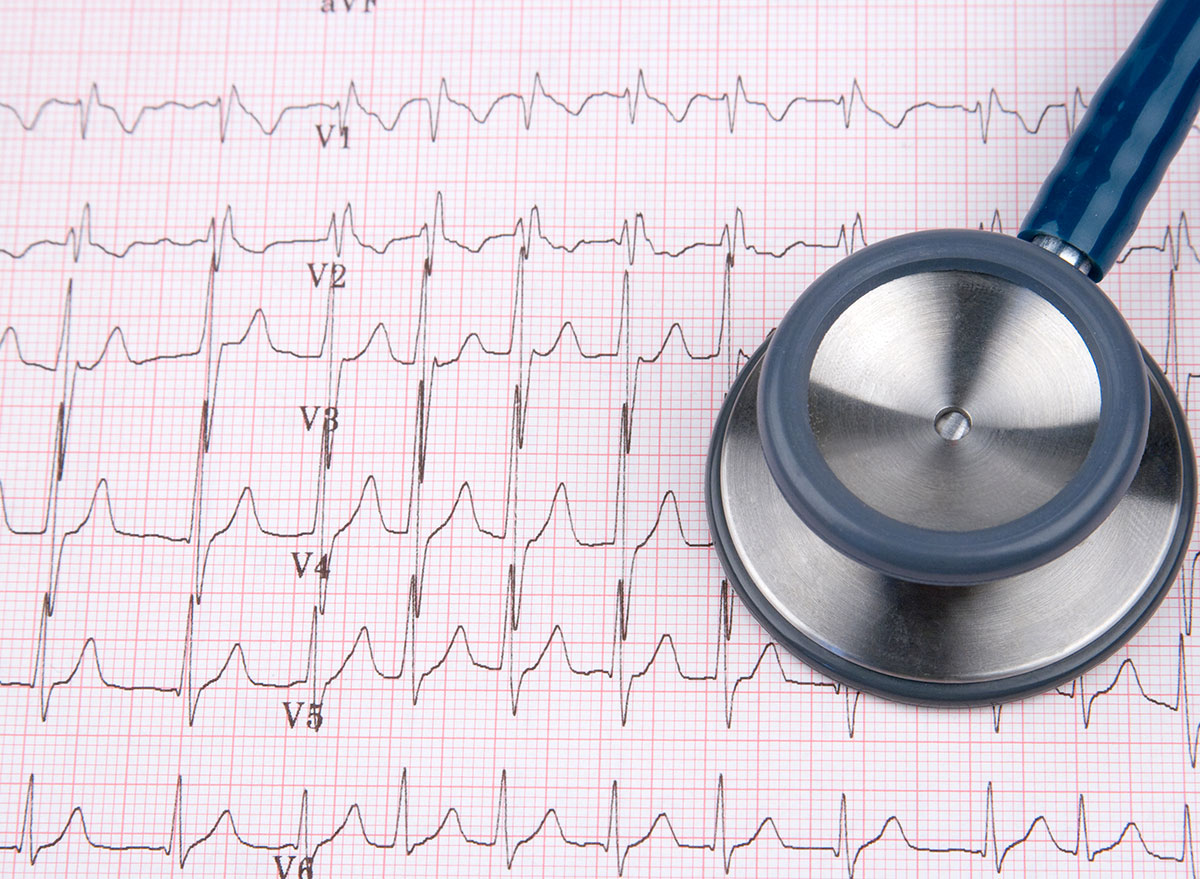
The Mayo Clinic defines arrhythmia as a heart rhythm problem and explains it happens when “electrical impulses that coordinate your heartbeats don’t work properly, causing your heart to beat too fast, too slow or irregularly.” A study published in HeartRhythm studied hospitalized coronavirus patients and found some of them suffered bradyarrhythmias or cardiac arrests. The study concluded heart traumas and abnormalities like these are “likely the consequence of systemic illness and not solely the direct effects of COVID-19 infection.”
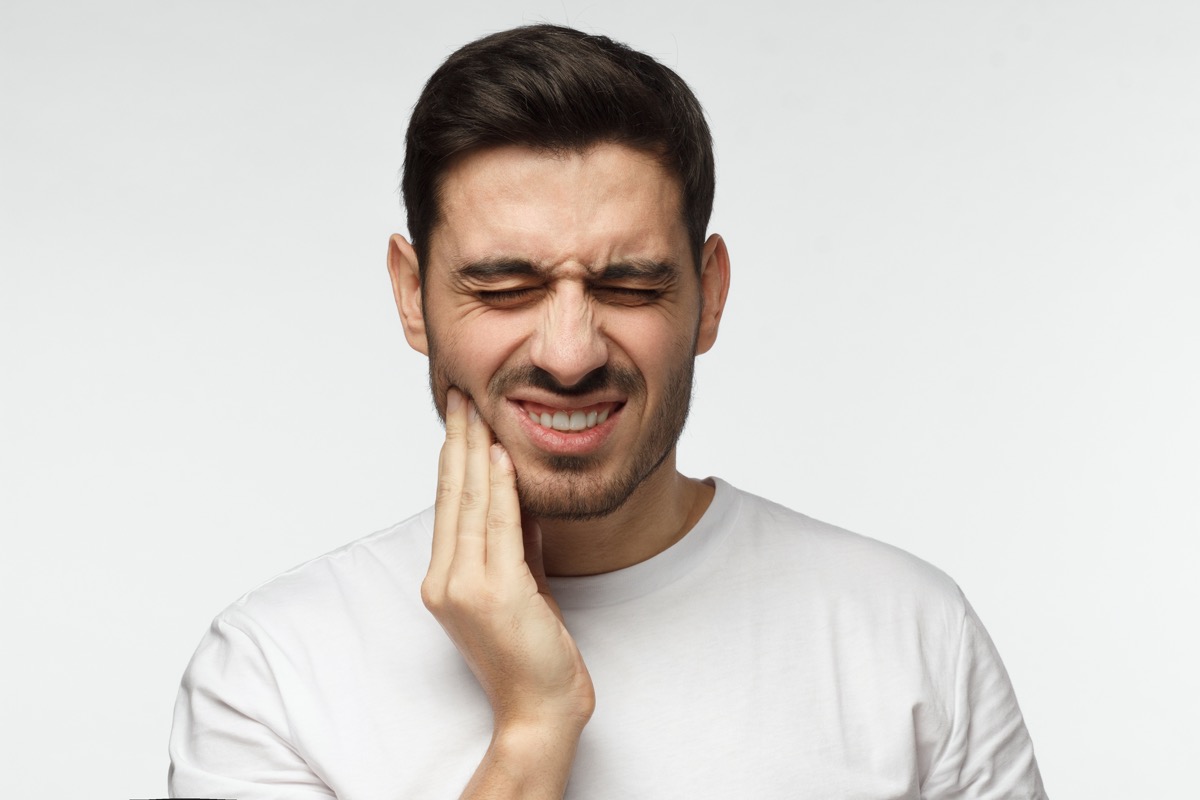
In the survey, 80 participants reported jaw pain as a long-lasting symptom of COVID-19. According to the American Dental Association, jaw pain may be caused by bone problems, stress, infection, sinus issues, or tooth grinding. It’s known that coronavirus causes aches and pains, so this jaw pain may be a lingering side effect of the body fighting off the virus.
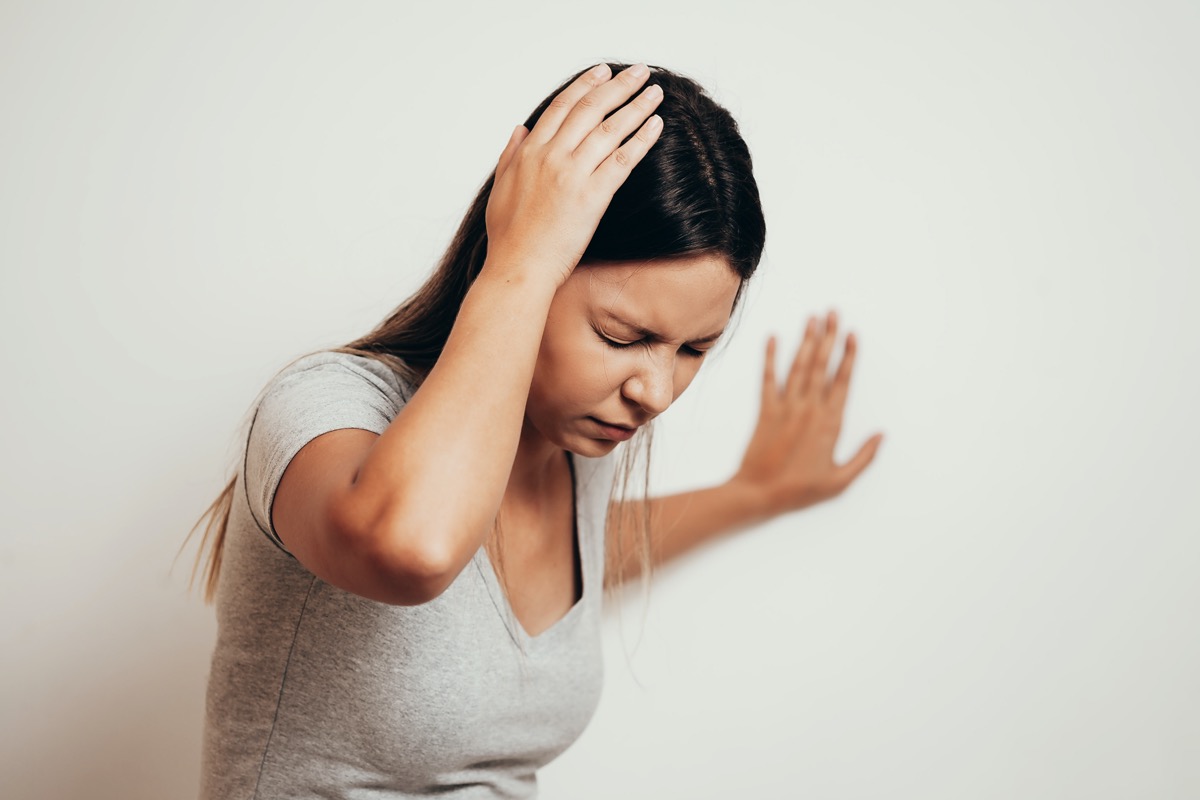
For COVID-19 sufferers, a painful scalp may be a side effect of the dandruff the virus may cause or aches and pains associated with the illness. According to Kaiser Permanente, scalp pain or ailments may occur after recovering from a high fever, when dealing with a thyroid issue, or if you have poor nutrition.
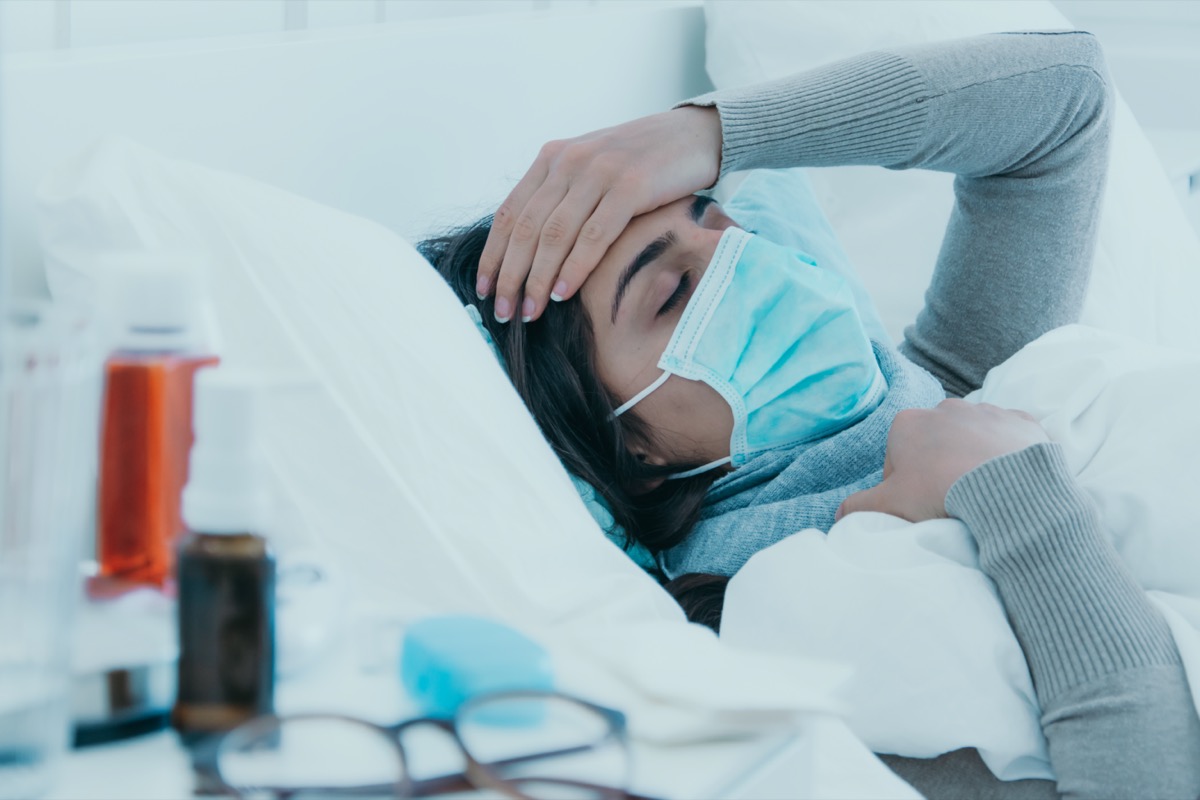
According to an article published in St. Peter’s Health Partners, a “tingling, burning, or ‘fizzing’ sensation” was reported from several COVID-19 patients. This sensation may be a side effect of other symptoms, such as aches and pains or fever.

According to the National Institute of Neurological Disorders and Stroke, back pain intensity can range “from a dull, constant ache to a sudden, sharp or shooting pain.” Those recovering from illness may report this pain due to a decrease in movement over the past few days or due to the usual aches and pains of their sickness. It’s usually treated with muscle relaxants, gentle stretching, heat, or ice.

After potentially experiencing a fever while fighting off COVID-19, sufferers may be surprised by the strange long-lasting symptom of a low body temperature once they’ve recovered. According to Kaiser Permenante, a low body temperature may occur with an infection or may be a sign of diabetes or a low thyroid level. A low temperature may also be the culprit for chills, since the body attempts to warm up with narrowed blood vessels.

Your veins circulate the blood around your body and when you’re too cold or hot, your blood vessels may constrict or widen. This may be due to having a fever, then low body temperature, or it may be a sign of dehydration. According to the Mayo Clinic, these bulging veins may be due to inactivity or damaged blood valves.
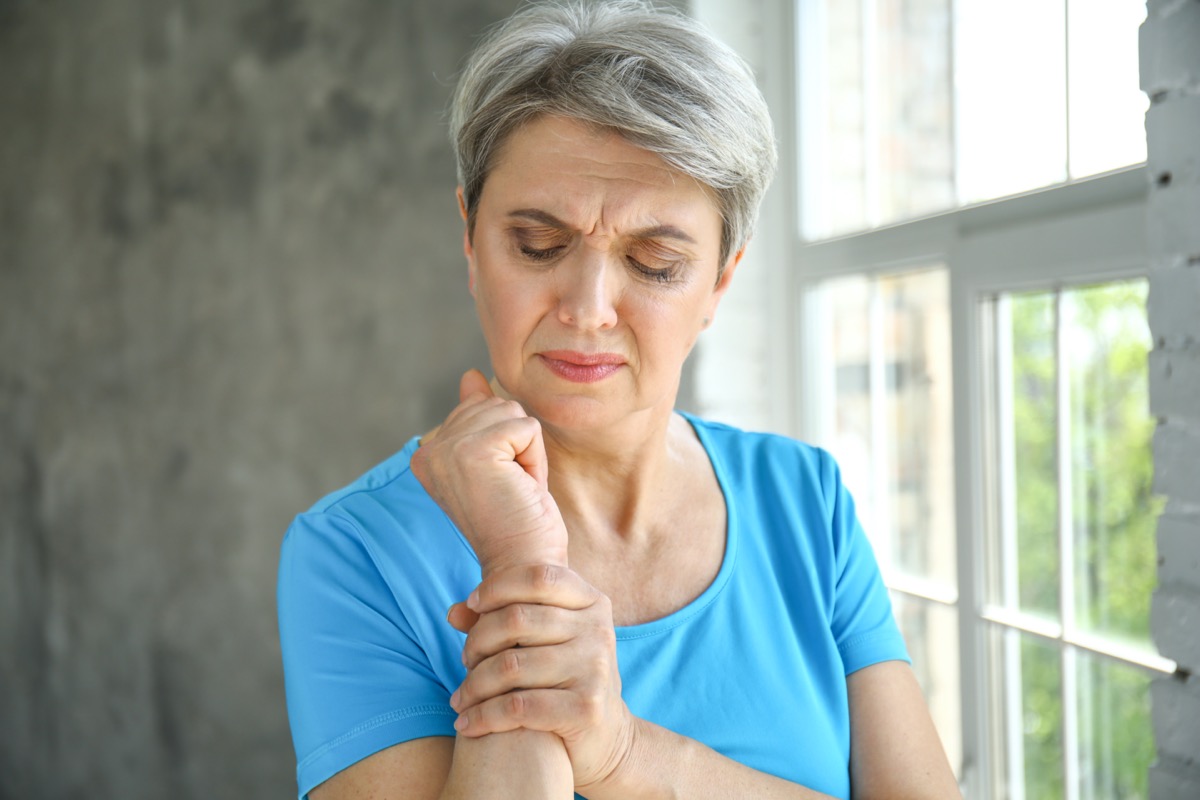
Arthralgia (joint pain) is a common symptom of coronavirus and a study published in the Nature Public Health Emergency Collection found that at least one patient in the 40 that were studied experienced joint pain. This joint ailment may linger in those who had the virus, causing hand or wrist pain to remain.

The Mayo Clinic defines costochondritis as “inflammation of the cartilage that connects a rib to the breastbone (sternum).” Cedars-Sinai claims that the risk for developing a chest wall infection like costochondritis is increased with respiratory trauma, such as pneumonia or bronchitis. Since COVID-19 is a respiratory illness, it’s not surprising that 98 survey respondents who had the virus claimed costochondritis as a lingering symptom.

According to Rush University Medical Center, a spike in blood pressure could be caused by a number of factors, such as stress, thyroid problems, or certain medications. A study published by the American College of Cardiology found a potential link between the virus and the renin-angiotensin aldosterone system, which is a “critical neurohormonal pathway that regulates blood pressure and fluid balance.” This may explain the changes in blood pressure these patients experienced after coronavirus.

According to the National Kidney Foundation, acute kidney damage occurs in about 15% of COVID-19 patients, some of which never had kidney problems before. The survey found that 115 respondents have kidney pain after coronavirus, which may be a sign that the virus has caused kidney damage.

The long-term extreme effects of COVID-19 still remain a mystery, but the survey found that 119 people who had the virus suffered from brain pressure. A study published in the Journal of the Brazilian Society of Tropical Medicine found a potential link between COVID-19 and benign intracranial hypertension, a condition that causes pressure in the brain. These symptoms are usually temporary but can be serious if they get worse and are left untreated.

According to the Cleveland Clinic, swollen lymph nodes are usually a sign that your body is fighting an infection. Your glands are working hard to flush out toxins and cells through lymph fluid. When your body fights a virus like COVID-19, lymph nodes may swell as all hands are on deck trying to get rid of the illness.
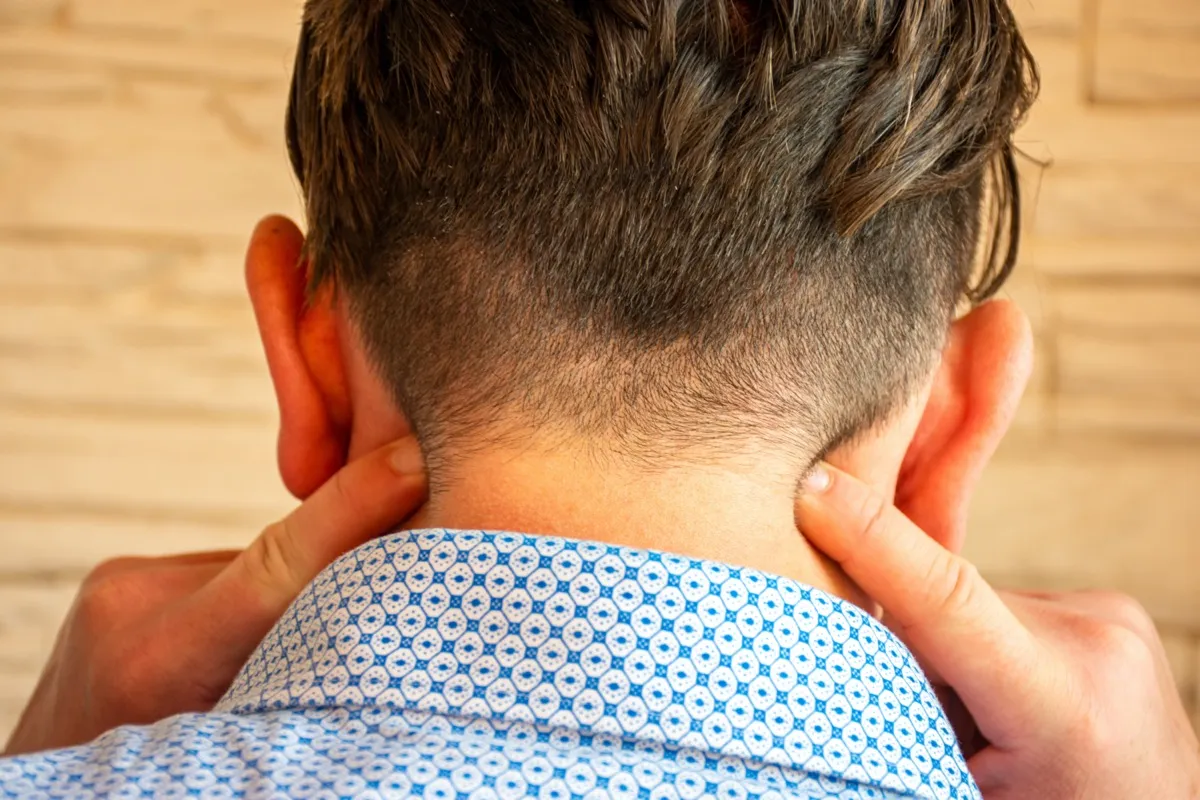
One of the common symptoms of COVID-19 is a headache but 128 survey participants reported feeling extreme pressure at the base of their head or occipital nerve after recovering from the virus. According to the American Association of Neurological Surgeons, pressure at the occipital nerve (the nerves that run through the scalp) may be caused by muscle tightness or pinched nerves. These nerves may experience pressure or pain during an infection or due to blood vessel inflammation.

According to a study published in JAMA Dermatology, the virus may be associated with a number of different skin rashes. The study found two different types of rashes that occurred in some patients infected with the coronavirus: petechial flexural eruption and digitate papulosquamous rashes. These skin conditions could occur at any time during and after infection and may contribute to the feeling of burning skin.
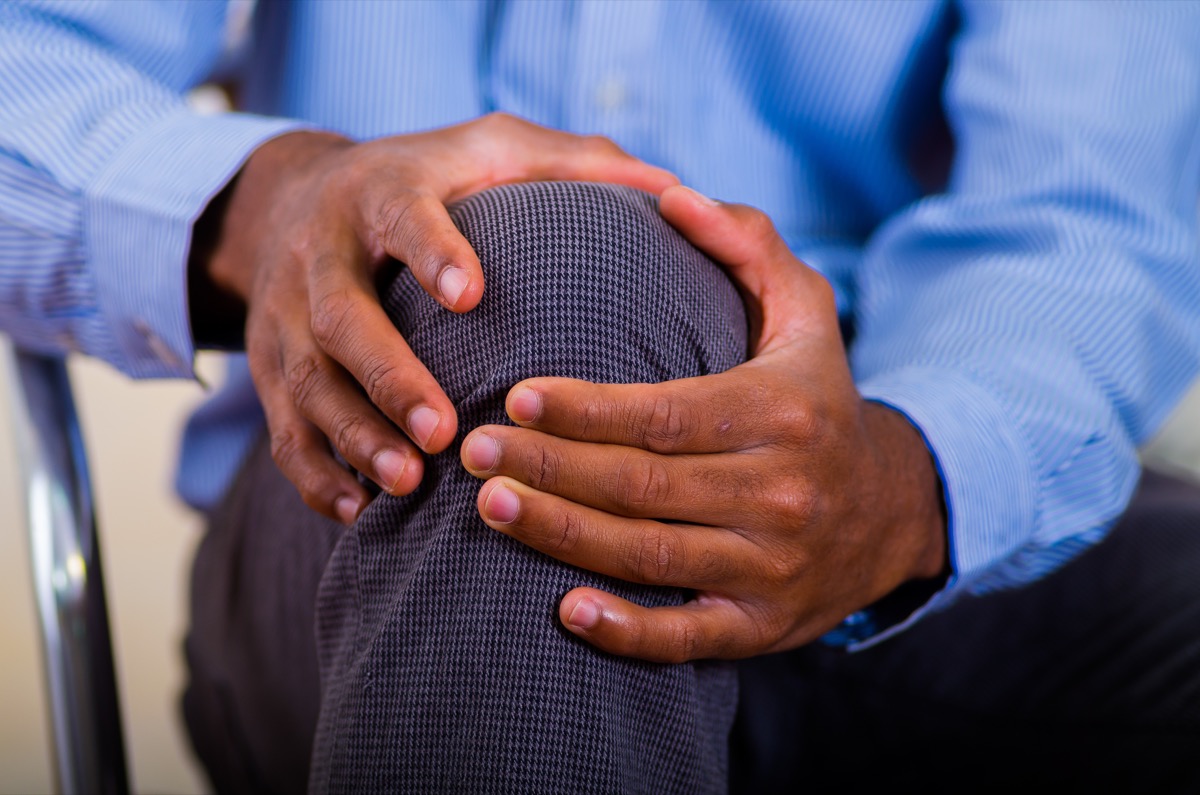
Body, joint, and bone aches are common with coronavirus and most other illnesses. According to one study, when the immune system is in overdrive, it causes an immune response that ramps up your white blood cells and causes them to produce glycoproteins called interleukins. These can cause joint pain, bone pain, and swelling.
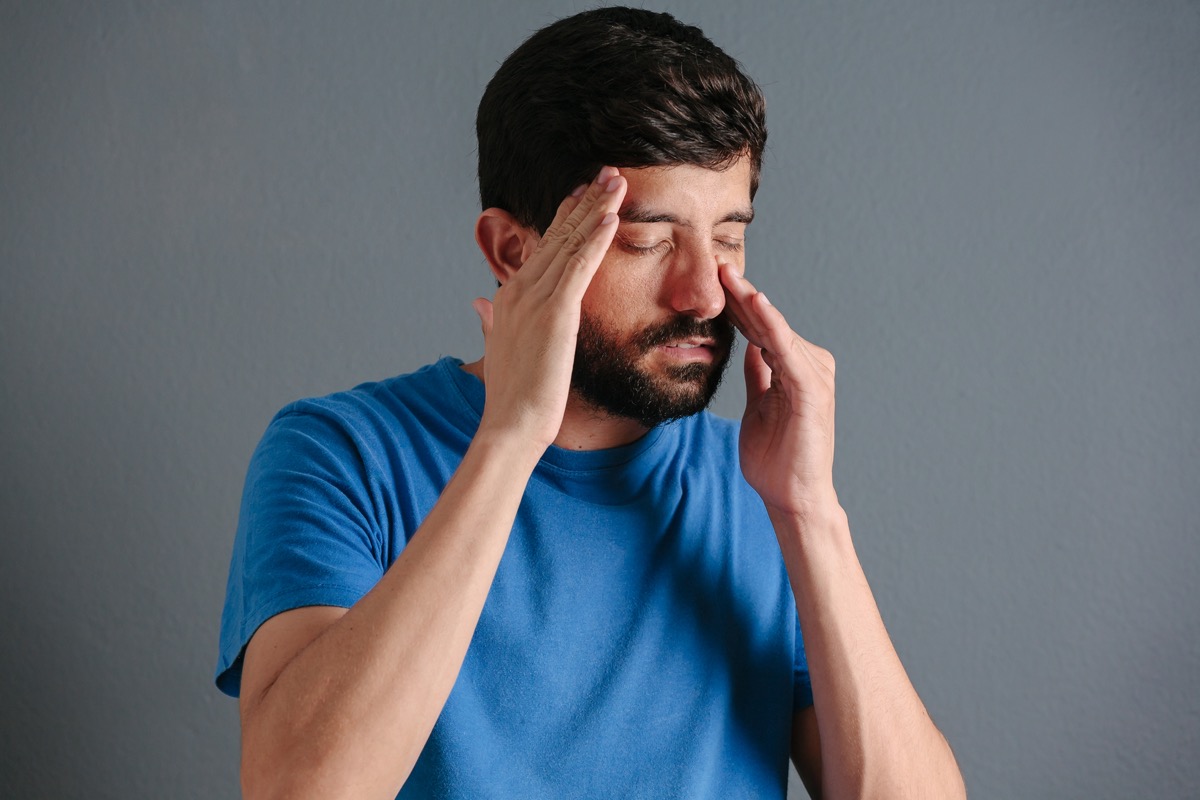
According to the Mayo Clinic, this condition is called phantosmia or olfactory hallucinations and they’re commonly caused by upper respiratory infections like the virus.

These feelings of hot blood rushing may be due to blood vessel irregularities caused by the virus or remnants of a fever. According to a study published in Science Daily, this sudden rise in temperature may be your immune system cranking up in an attempt to continue killing off the virus. The study found that “elevated body temperature helps certain types of immune cells to work better.”
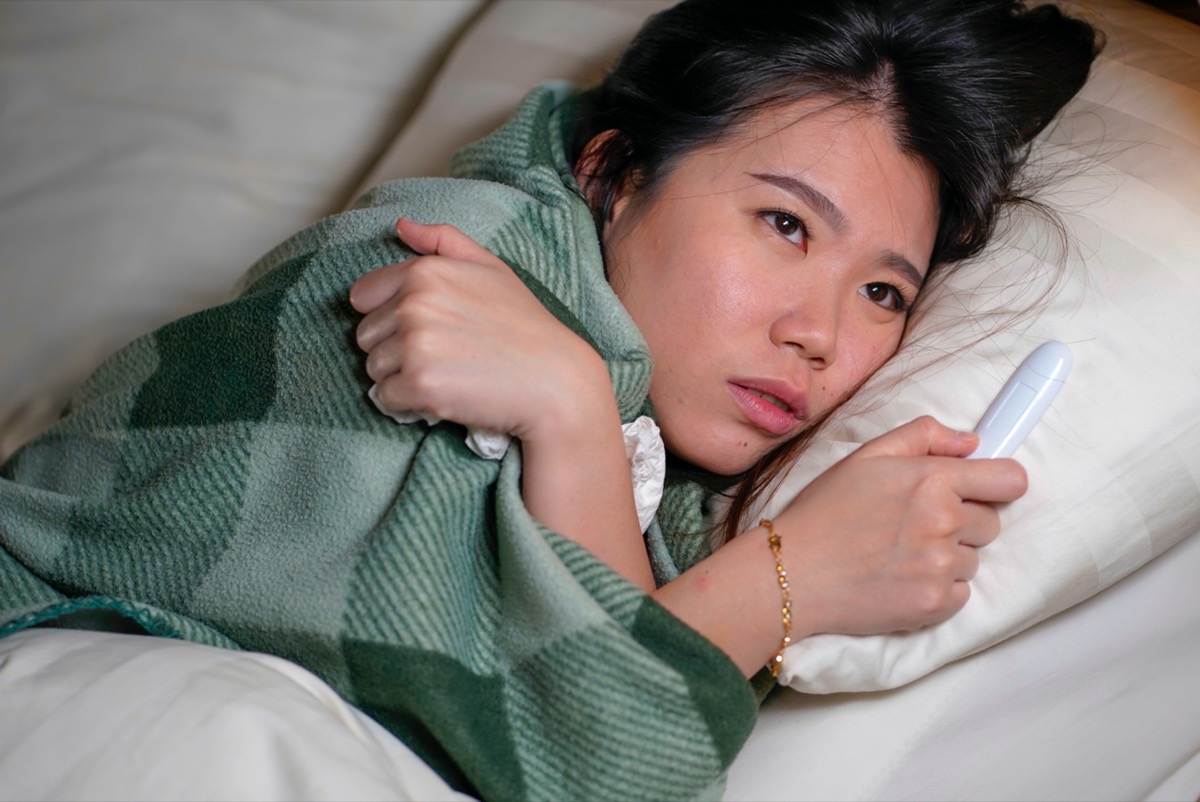
Chills without a fever can be a long-lasting COVID-19 symptom. It could be the body’s way of continuing to regulate temperature and recover from a previous fever. According to Keck Medicine of USC, chills without a fever may also indicate your body is under stress and fighting a viral or bacterial infection or you’re dealing with low blood sugar, which makes sense if you didn’t eat much while you were sick.

According to John Hopkins Medicine, your neck doesn’t have much protection or support so neck pain is common. Since the virus is known to cause muscle and joint pain, as well as body aches, your sensitive neck is more susceptible to this lingering symptom.
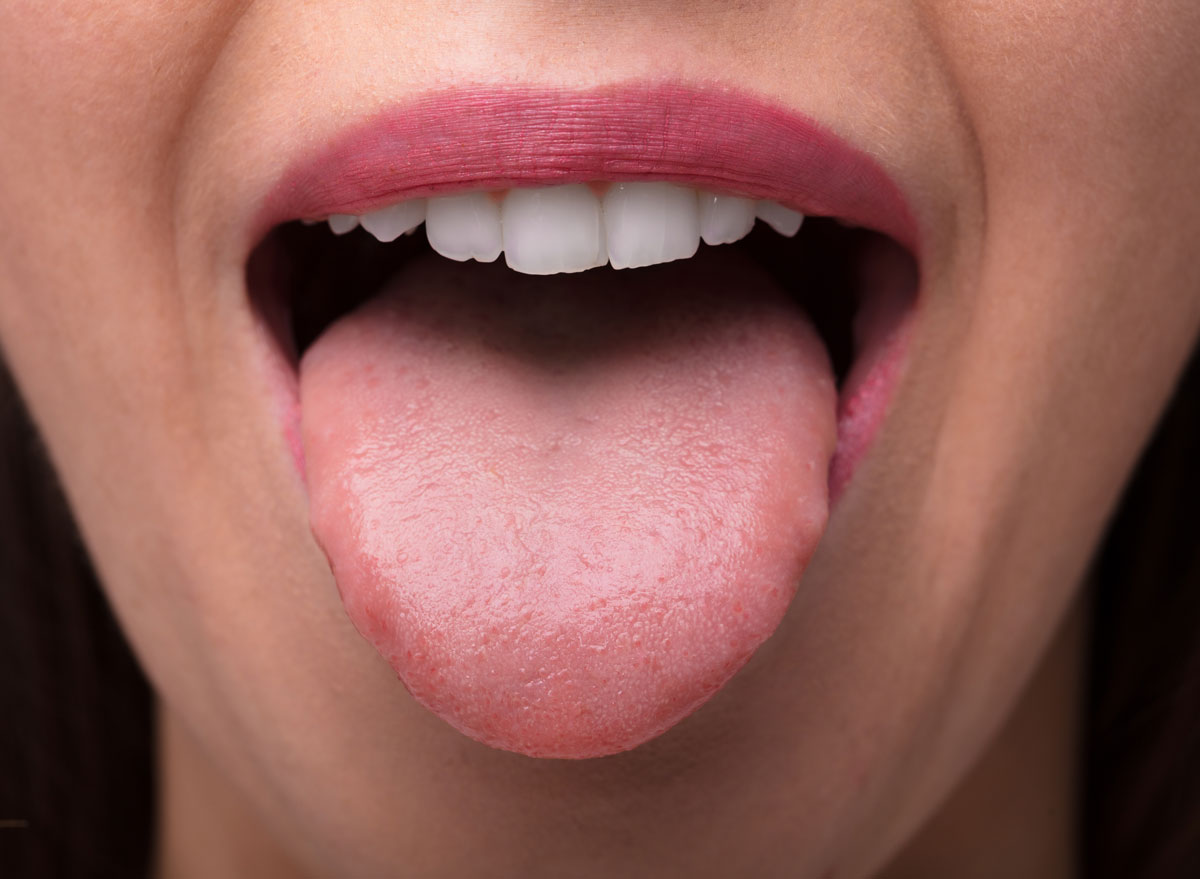
According to the University of Florida Health, tongue pain and soreness can be caused by a number of factors, such as infection, hypothyroidism, or a tumor in the pituitary gland. A study published in the International Journal of Infectious Diseases found that oral mucosal lesions may be associated with COVID-19 patients, which could explain this long-lasting virus symptom.

According to the CDC, one of the most common symptoms of COVID-19 is a fever. The body may need time after a fever has dissipated to recover and regulate its temperature. This may be why 165 survey respondents claim to have heat intolerance after being infected with COVID-19. As the immune system fights off the virus, it raises and lowers the body’s temperature accordingly, which may cause this heat intolerance to linger.

Those who contracted COVID-19 and experienced “COVID toes” or other skin-related symptoms may also be dealing with swollen hands and feet. According to the Mayo Clinic, this swelling is called edema and it could be linked to kidney or heart problems, both of which may be caused by coronavirus.
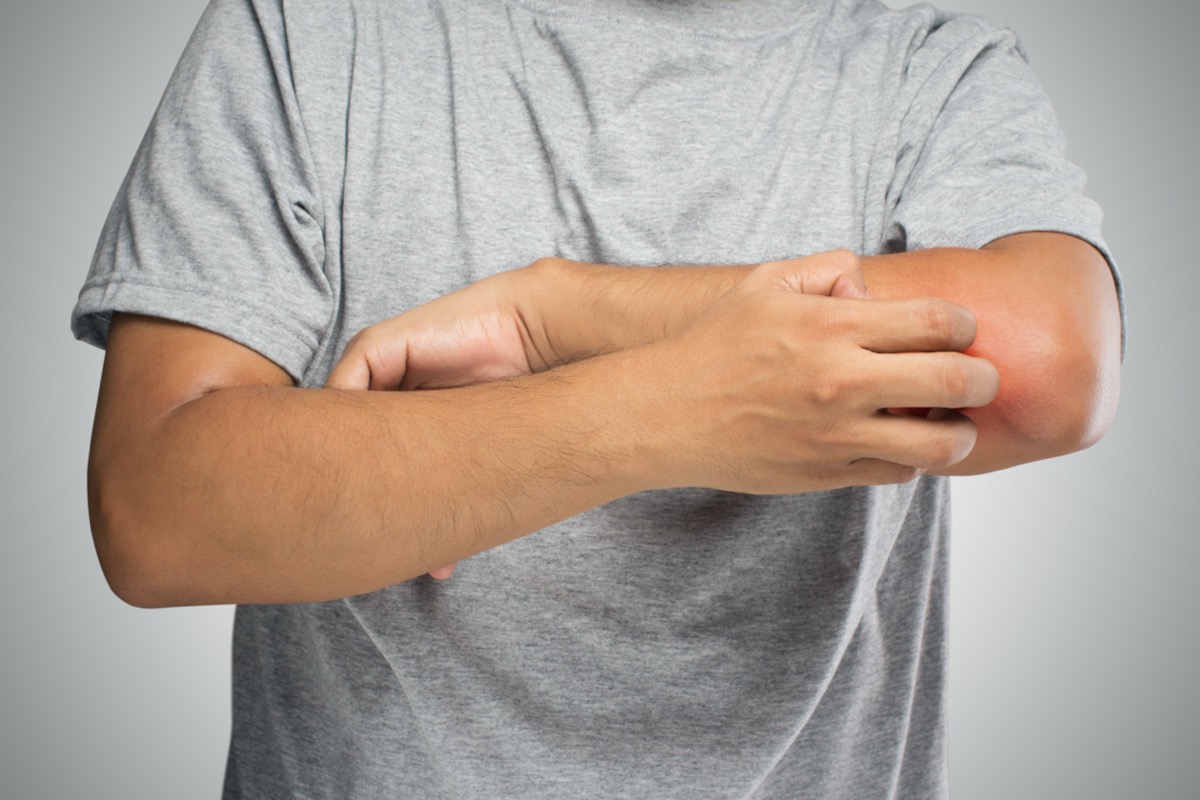
Dry skin may be attributed to the rashes and cutaneous manifestations that some people develop on their skin due to the virus. However, according to the American Skin Association, dry skin may also be attributed to a decline in fluid intake, which can happen when you’re sick. It may also be a telling sign of a thyroid problem or hormonal imbalance.
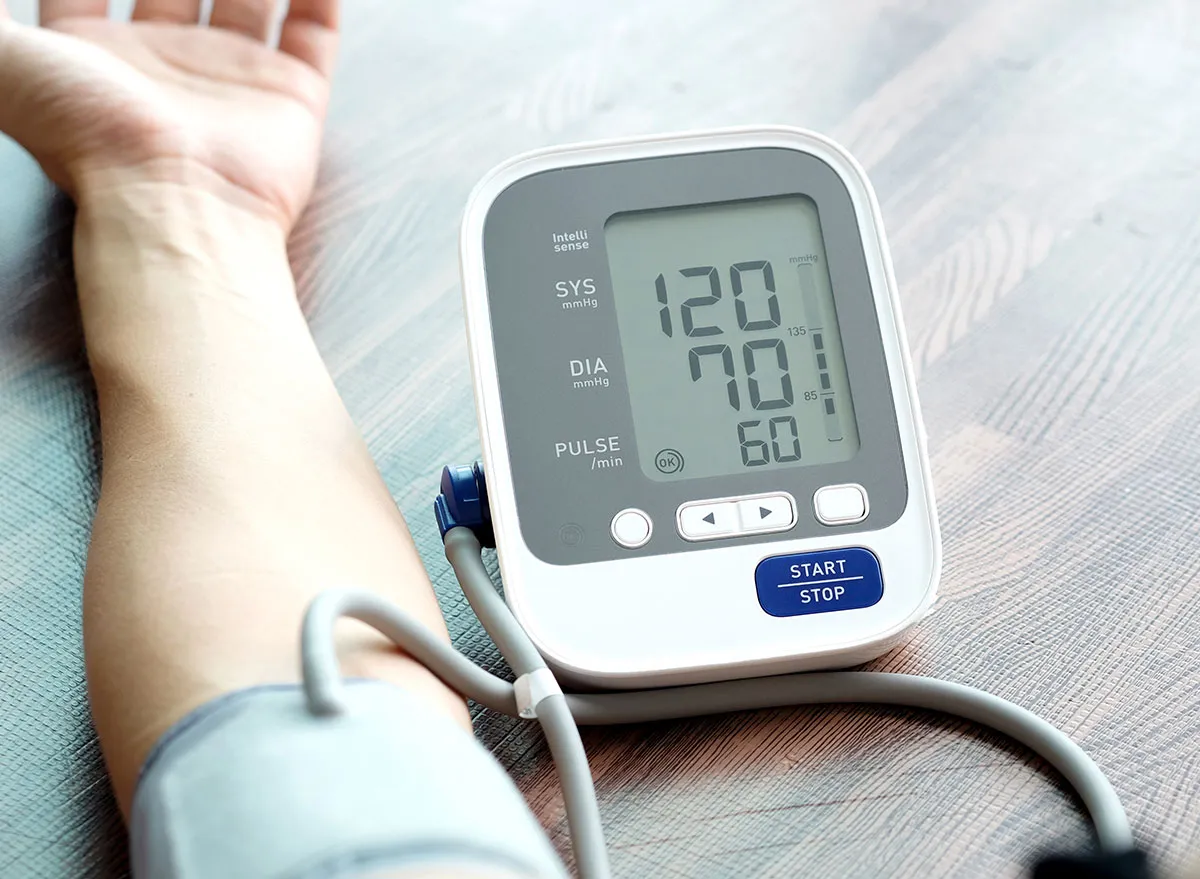
According to A&D Medical, “High blood pressure is not a documented symptom of COVID-19, but it can exacerbate the symptoms of the virus.” Those who report experiencing high blood pressure after having COVID-19 likely already suffered from this condition but fighting the virus may have made it worse.

According to the World Health Organization (WHO), COVID-19 symptoms generally include a dry cough and sore throat. Living with a dry cough and sore throat throughout the course of the virus may cause this dry throat to remain for a while, even after testing negative for COVID-19.

Post-nasal drip is when mucus drips down the back of your throat and it’s common after you’ve had a stuffy or runny nose. After dealing with allergy or sinus issues or infections, post-nasal drip can linger for a while. If one’s body produced extra mucous and fluids in an attempt to fight off the virus, this mucus may continue to drip. According to Harvard Health Publishing, you can treat post-nasal drip by staying hydrated, taking a nasal decongestant, or inhaling steam, such as from a hot shower.
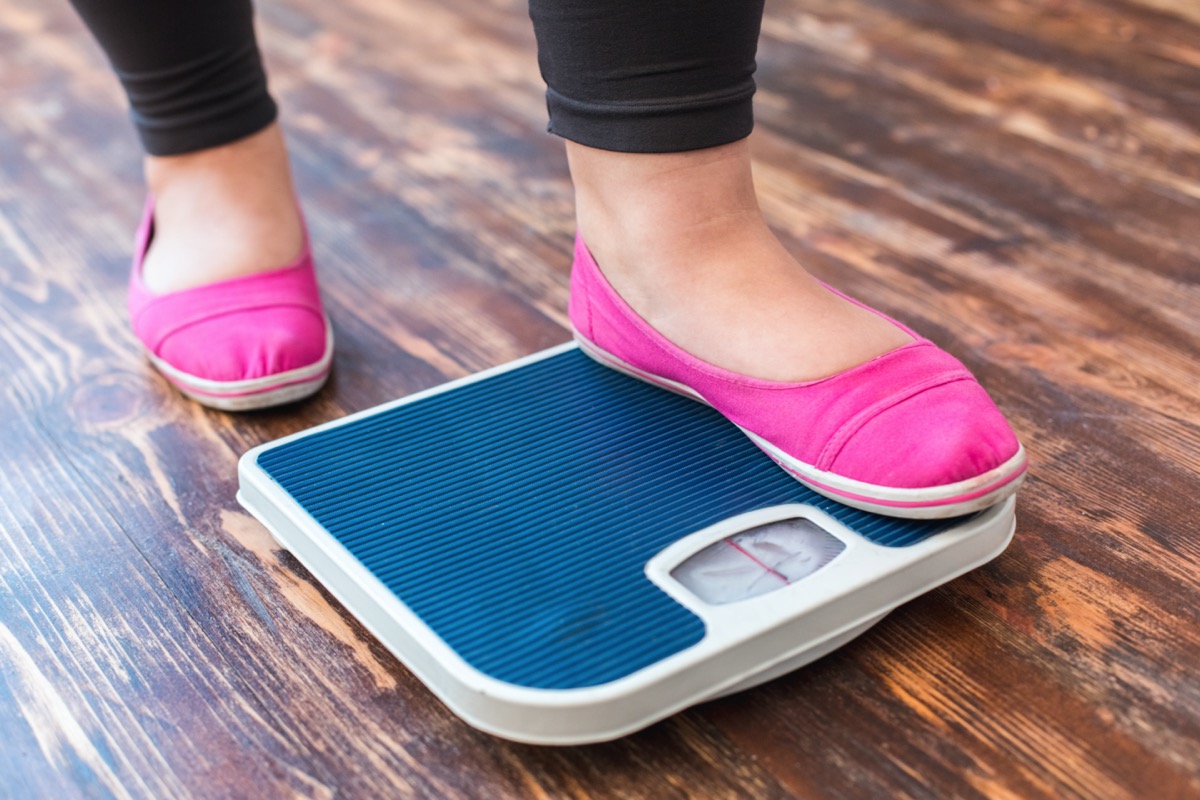
COVID-19 survivors who had severe cases are likely to experience extreme weight loss. According to an article posted by Northeast Ohio Medical University, it’s common for patients who survive severe infections or illnesses to lose weight. When sufferers are placed on ventilators or hospitalized for long periods of time, their bodies don’t obtain the proper nutrition or muscle-building exercise. The body is also under stress fighting off the virus, which can cause this weight loss to occur.

According to MedPage Today, it’s not uncommon for patients recovering from COVID-19 to feel irritable or angry. The virus may have mental health effects that make it hard for those who have recovered to go back to work or their daily routine without mood swings. Patients who were hospitalized may experience irritation and symptoms similar to post-traumatic stress disorder (PTSD) after being released.

According to the University of Florida Health, muscle twitches may be caused by stress, lack of nutrients, or lack of sleep. Coronavirus is known to make its sufferers tired and their bodies stressed from fighting the virus, so this may explain muscle twitching. In some cases, it may be a sign of muscle damage or nervous system disorders.

Mild confusion or “brain fog” is a common symptom of coronavirus and most colds, flues, and viruses. According to an article published in Science Magazine, this confusion may occur because the body’s systems are focused on fighting the illness, not giving enough focus, blood, or alertness to the brain.

According to the CDC, persistent pressure or pain in the chest is a symptom of COVID-19 and 210 survey participants claim to continue feeling this symptom after the virus is gone. As a respiratory virus, it’s possible that this pain or pressure is actually being felt in the lungs. However, according to Diagnostic and Interventional Cardiology, stroke, heart failure, arrhythmias, and other cardiac events have also been linked to coronavirus so sufferers should take this lingering symptom seriously.

A loss of sense of taste is a common symptom of COVID-19 but 221 survey respondents claim the virus may have completely changed their sense of taste. According to Kaiser Permanente, a loss of sense of taste or partial loss may cause tastes to change. These changes may also be caused by a decrease in taste buds or changes in the way the nervous system processes certain taste sensations.

Tinnitus is a ringing or noise in the ear and Long COVID patients claim they now experience this ringing or humming in the ears after recovering from COVID-19. According to the American Tinnitus Association, the onset of tinnitus may occur due to stress and anxiety, after there’s been damage to the inner ear, or when other conditions or diseases are developed.
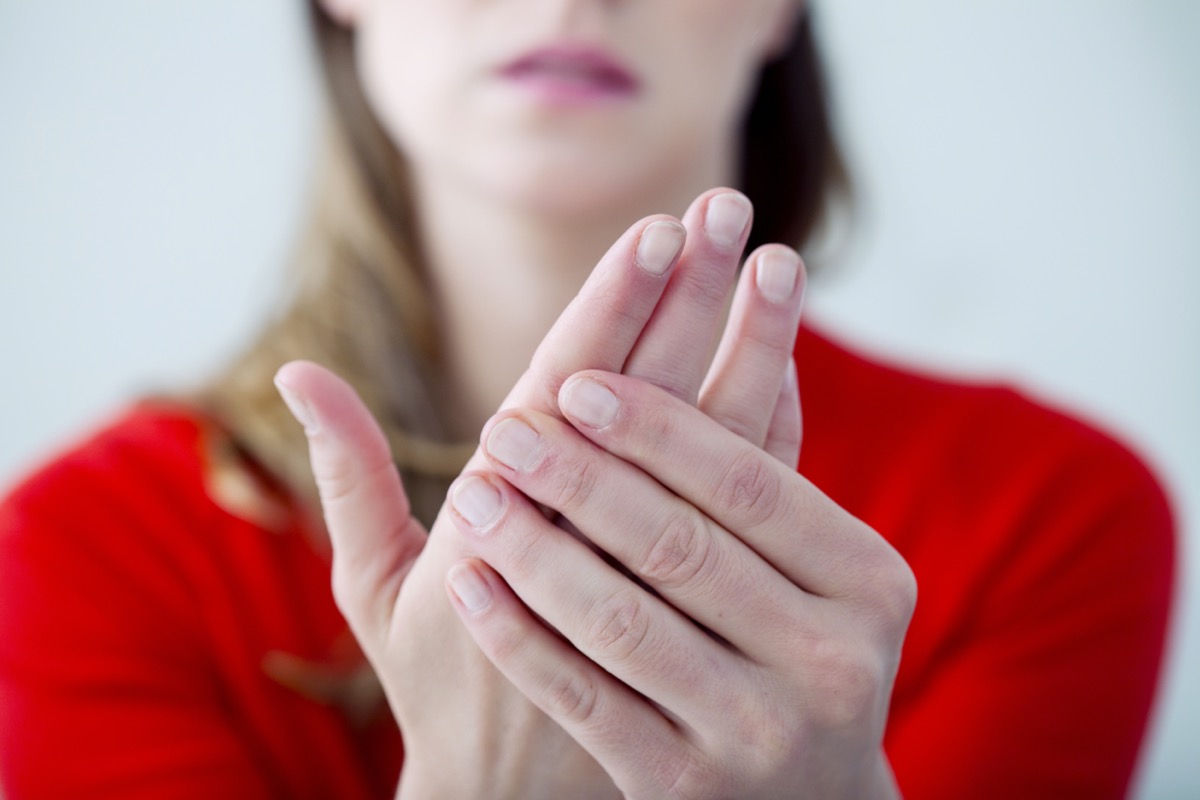
According to a study published in the Elsevier Public Health Emergency Collection, “Viral infections have detrimental impacts on neurological functions, and even cause severe neurological damage.” 243 survey participants reported feeling nerve sensations after COVID-19, which may be due to neurological damage caused by the virus.
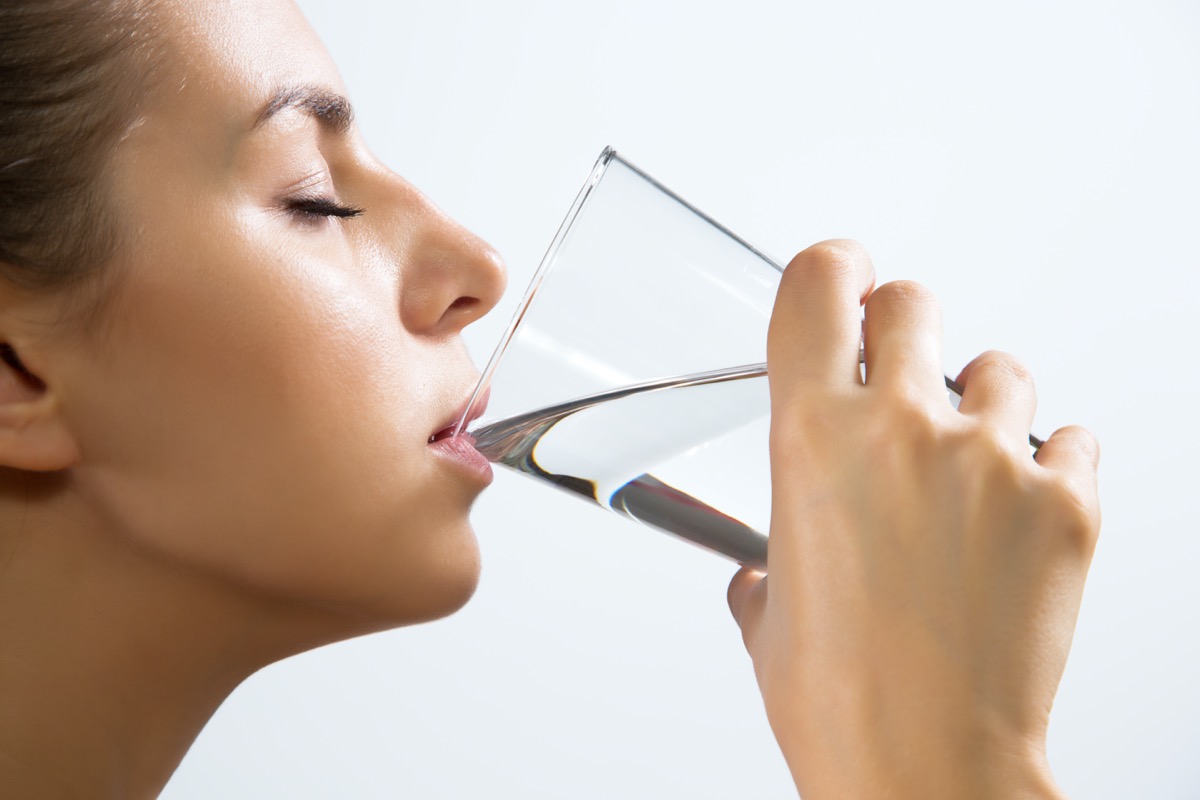
When you contract an illness or a virus like coronavirus, your body’s working overtime to fight it. According to the Mayo Clinic, your body needs more fluids when you’re sick and if it doesn’t get the fluids, you’re likely to suffer from constant thirst. It’s your body’s way of telling you it’s not getting enough fluids to continue fighting and recovering from the virus.

In some COVID-19 cases, patients have developed rashes on their skin. According to a research letter published in the JAMA Network, some coronavirus patients suffered from enanthem, a skin rash that looks like small white spots on the mucous membranes. Other patients had widespread urticaria, or hives, on their skin. Other rashes were also found in some COVID-19 patients who were studied. Scientists aren’t sure if this side effect is directly related to the virus or attributed to certain medications.

According to UCLA Health, “floaters” are little specks or lines that float around in your field of vision every once in a while. If you constantly see floaters or they’re accompanied by flashes of light, it may indicate you have a retina tear or vitreous detachment, which occurs when vitreous gel in the eye separates from the retina. In the survey, 249 respondents claimed to suffer from floaters or flashes of light in their vision after COVID-19.

As with most illnesses, coronavirus is associated with muscle aches and pains. Patients with COVID-19 who were bedridden or spent an extended period of time inactive may experience upper back pain due to immobility. According to Kaiser Permanente, upper back pain isn’t as common as lower back pain but may be caused by muscle strain, poor posture, or pressure on the spinal nerves.

Fatigue is a common symptom of coronavirus but some sufferers are having trouble shaking off that tiredness. According to an article published in The Scientist, it’s possible that COVID-19 may lead to chronic illness, including chronic fatigue. Scientists are tracking these symptoms amongst sufferers who seek treatment so they can get a grasp on what other symptoms may lead to chronic illness.

According to Northwestern Medicine, tremors may be caused by stress, anxiety, or too much caffeine. Tremors or shakes when you pick up a glass of water or hold a piece of paper may also indicate that you have essential tremor (ET), which is a neurological disorder that causes these shakes. These tremors may occur because the body is recovering from the stress of the virus, they may indicate ET, or there may be another underlying cause.

According to the University of Rochester Medical Center, muscle cramps usually occur after heavy exercise, when you’re experiencing muscle fatigue, or if your body’s dehydrated. Since the virus and other illnesses are notorious for dehydrating your body and causing muscle fatigue, these calf cramps may be an explainable symptom of coronavirus. Massaging, stretching, and warm compresses could help mitigate these cramps.

An article published in Review of Optometry reviewed the relationship between ocular symptoms and coronavirus in Chinese patients. It found that 27% of those studied complained of itchy, dry, and red eyes. Some even began to develop sore and dry eyes a few days before any other COVID-19 symptoms. Researchers feel this may be because coronavirus “infects the mucosa membrane epithelium and even lymphocytes, which are both abundant in ocular surface tissue.”
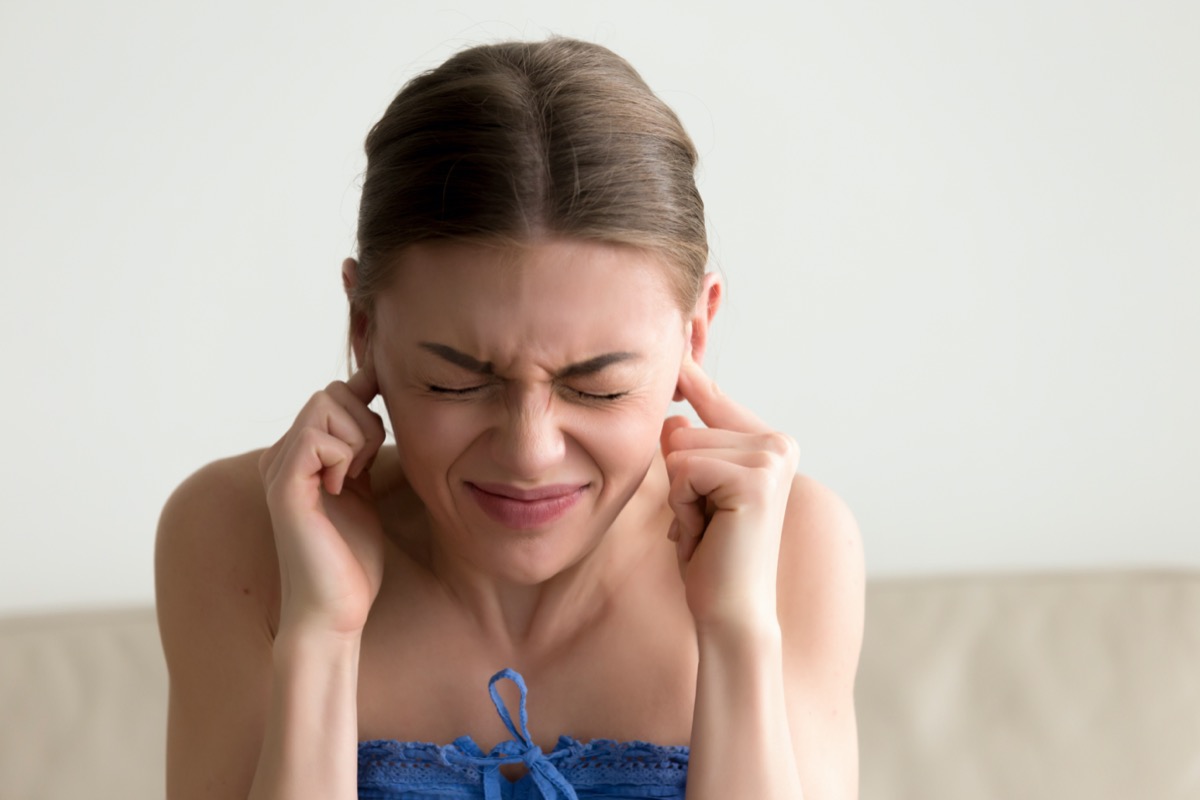
According to the Mayo Clinic, when your ears are clogged “your eustachian tubes — which run between your middle ear and the back of your nose — become obstructed.” It may cause pressure, ear pain, muffled hearing, or dizziness. The survey found that 267 participants experienced clogged ears as a long-lasting symptom of COVID-19. Since clogged ears are common with a stuffy nose and other respiratory illnesses or sinus infections, it’s a common symptom of coronavirus. To relieve pressure, you can try popping your ears or taking a nasal decongestant.
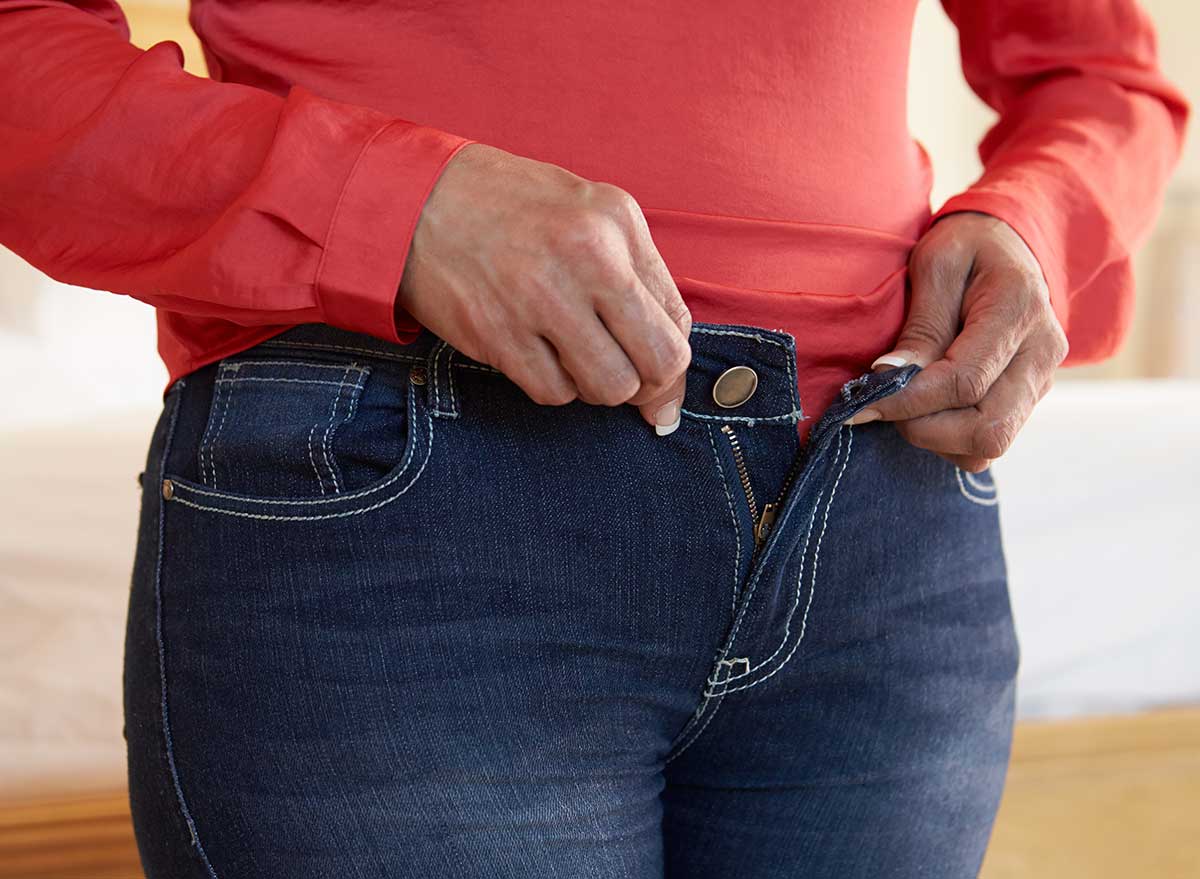
While weight gain isn’t a symptom of the virus, stress from getting sick, lockdown and quarantine may be to blame for the extra pounds. A study published in the Journal of Translational Medicine analyzed Italian citizens placed on strict lockdown and observed their lifestyle and eating habit changes. It found that 48.6% of the population studied gained weight. While the virus itself may not be to blame for this side effect, the stress and anxiety of lifestyle changes could be.

While it’s not usually listed as a common symptom of COVID-19, many who got the virus also suffered from nausea, vomiting, diarrhea, or other gastrointestinal problems. The survey found that 314 respondents claimed they still suffered from nausea or vomiting after coronavirus. According to the Mayo Clinic, these gastrointestinal symptoms were varied and some felt them well before a diagnosis. Others only dealt with these symptoms for one day.

Shortness of breath is a common symptom of COVID-19 but 318 survey participants reported that they continued to feel shortness of breath or exhaustion when they bent over. According to Penn Medicine, this may be a sign of an ongoing pulmonary problem or heart problem. While shortness of breath is common with COVID-19 sufferers, those who have recovered should seek medical attention if this symptom doesn’t seem to be going away.

COVID-19 causes myalgia, pain in a muscle or a group of muscles. An article published in Nature Public Health Emergency Collection concludes that myalgia in COVID-19 patients lingers longer than it may with other illnesses. Lower back pain is usually associated with pneumonia or poor lung function and since COVID-19 is a respiratory virus, it makes sense that patients are more likely to experience this type of muscle pain.

While not a common symptom of COVID-19, many who contracted the virus did report gastrointestinal problems. This could explain why Long COVID patients dealing with abdominal pain well after contracting the virus. In a study published through the American Gastrological Association, 31.9% of COVID-19 patients studied claimed to have gastrointestinal problems associated with the virus.

While a dry cough is most commonly associated with coronavirus, some patients may experience phlegm in the back of their throat during the later stages. For coronavirus patients dealing with phlegm, the University of Maryland Medical System suggests taking an expectorant to help get the mucus out and make your cough more productive. Staying hydrated and drinking warm beverages may also help to break up the phlegm.

Loss of taste, called ageusia, and loss of smell, called anosmia, are common symptoms of the virus and the duration of these symptoms varies by patient. A study published in the Journal of Korean Medical Science analyzed Korean COVID-19 sufferers and the duration of this specific symptom. The study found that, “Most patients with anosmia or ageusia recovered within 3 weeks.”

As COVID-19 takes its course, patients may report symptoms that change frequently. For example, a patient may begin experiencing a headache and fever, then move onto shortness of breath and muscle aches. According to the CDC, “U.S. COVID-19 patients report a wide range of symptoms across a spectrum of illness severity.”

“Heartburn occurs when stomach acid backs up into the tube that carries food from your mouth to your stomach (esophagus),” according to the Mayo Clinic. Since the virus is known to cause gastrointestinal problems, some patients may take longer to recover from these inconsistencies than others. Avoiding alcohol, spicy foods, and large meals may help curb these long-lasting symptoms.

Neuropathy is weakness or numbness due to nerve damage. Since the virus can do some damage to the nervous system, this may be a lingering symptom for some sufferers. According to a report published in the Elsevier Public Health Emergency Collection, COVID-19 may even disguise itself as motor peripheral neuropathy without other symptoms. Nerve fibers may be more sensitive when a patient is infected with the virus, causing this numbing of the hands and feet.

Long Haulers can feel like a shadow of their former selves. A study published in The Lancet analyzed mental side effects of the virus and concluded that medical professionals should watch their patients for signs of depression or some neuropsychiatric syndromes well after recovery.

According to the American Pharmacists Association, the CDC recently added “runny nose” as a symptom of COVID-19. 414 survey respondents claimed a congested or runny nose as a lingering symptom of the virus. A runny nose is one way to get rid of the mucus in your body after the virus, so it may persist until the mucus is gone.

Blurry vision may be a sign of nerve damage or may also occur when other COVID-19 symptoms are going strong, such as a fever or headache. According to the American Academy of Ophthalmology, blurred vision may also be a symptom of endophthalmitis, which is an infection of tissue or fluids inside the eye. If this is the case, quick treatment is required to prevent blindness.
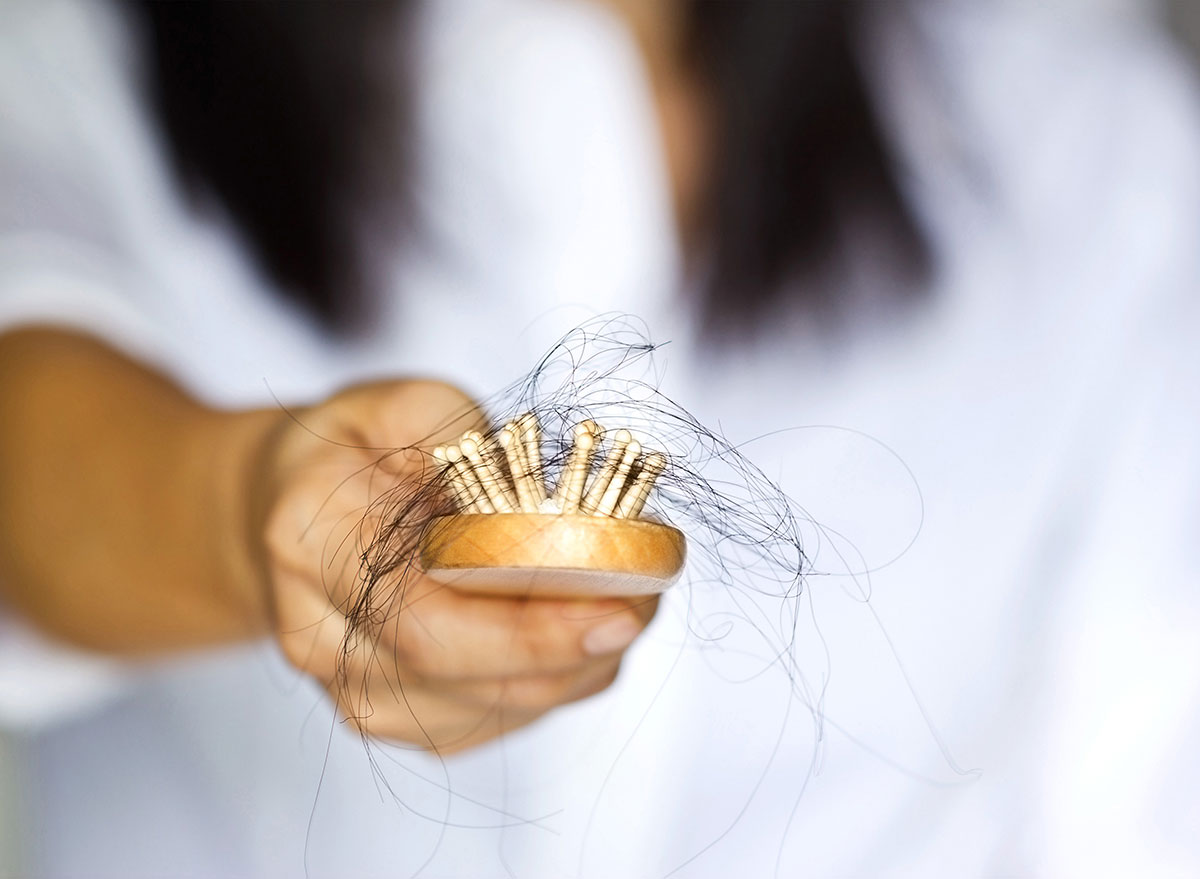
According to Dr. Shilpi Khetarpal, MD from the Cleveland Clinic, hair loss isn’t necessarily a symptom of COVID-19 but may be a side effect of the virus. She states, “We are seeing patients who had COVID-19 two to three months ago and are now experiencing hair loss.” In the survey, 423 respondents reported experiencing hair loss after coronavirus. Dr. Khetarpal says this may be due to a change in diet, high fever, extreme weight loss, or any other “shock to the system” that COVID-19 may have caused.

The CDC conducted a study on coronavirus patients and found that 96% of patients recovered from chills and 97% recovered from fever. While most recovered from all COVID-19 symptoms, 34% still revealed that they were suffering from one or more lasting symptoms when interviewed four to eight days after testing positive. 65% of sufferers returned to their usual state of health around seven days after testing positive but chronic medical conditions, age, weight, gender, and other factors may affect how long symptoms, such as fever and chills, last.

According to the Mayo Clinic, tachycardia occurs when your heart beats over 100 beats per minute. It’s a form of arrhythmia, or a heartbeat disorder. In the survey, 448 respondents experienced tachycardia after suffering from COVID-19. It may be the body’s response to stress, trauma, or illness. However, if tachycardia is left untreated and continues to occur, it can lead to serious complications, such as heart failure or stroke.

Partial or complete loss of sense of smell is a common symptom with COVID-19 and many other respiratory viruses, according to Penn Medicine. Since your olfactory system is so close to your respiratory system, virus cells can enter into nerve and receptor cells and cause damage. It can take a long time for these cells to repair and some cells may never fully recover from the virus.

According to Kaiser Permanente, night sweats are different from regular sweating because they occur only at night and include intense sweating, enough to soak through your clothes and sheets. It’s possible that night sweats are present due to a residual fever but they may also be caused by thyroid level issues, menopause, anxiety, or infections. New medication or other lingering symptoms, such as chills and muscle aches, may also contribute to long-lasting night sweats.

While not all coronavirus sufferers experience a sore throat, it’s one of the common symptoms the CDC lists for the virus. According to the CDC, viruses and infections cause sore throats, which may be why this is a lingering symptom for some coronavirus patients.

While it’s not the most common, diarrhea is listed by the CDC as a symptom of COVID-19. A study conducted by several researchers analyzed 206 patients with low severity COVID-19 and 48 experienced digestive problems first before other coronavirus symptoms. Diarrhea lasted an average of 14 days for COVID-19 patients in the study.
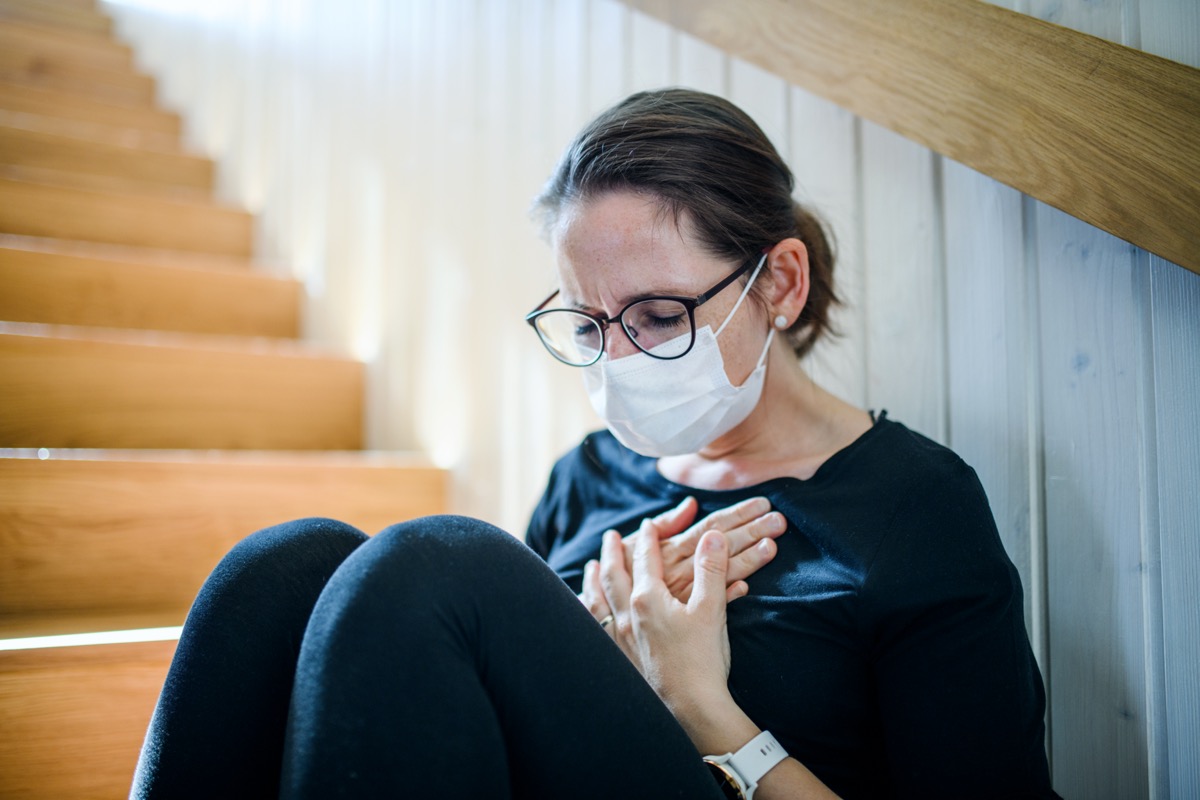
Even after the fever, headache, and dry cough have disappeared, some patients who have “recovered” from COVID-19 may experience heart palpitations. A study published in JAMA Cardiology examined 100 recovered COVID-19 patients and found that 78 of them had “cardiac involvement” while 60% had ongoing myocardial inflammation. Ongoing heart issues, such as palpitations, may be long-lasting for COVID-19 patients, regardless of their illness severity.

Dr. Richard Deem from Cedars-Sinai explains that as your immune system attempts to fight off COVID-19 or any type of illness, white blood cells produce interleukins to help join the fight. While these interleukins are useful in fighting off the virus cells, they also cause muscle and joint pain. The immune response may still be heightened in these recovering patients, causing this joint pain to last.
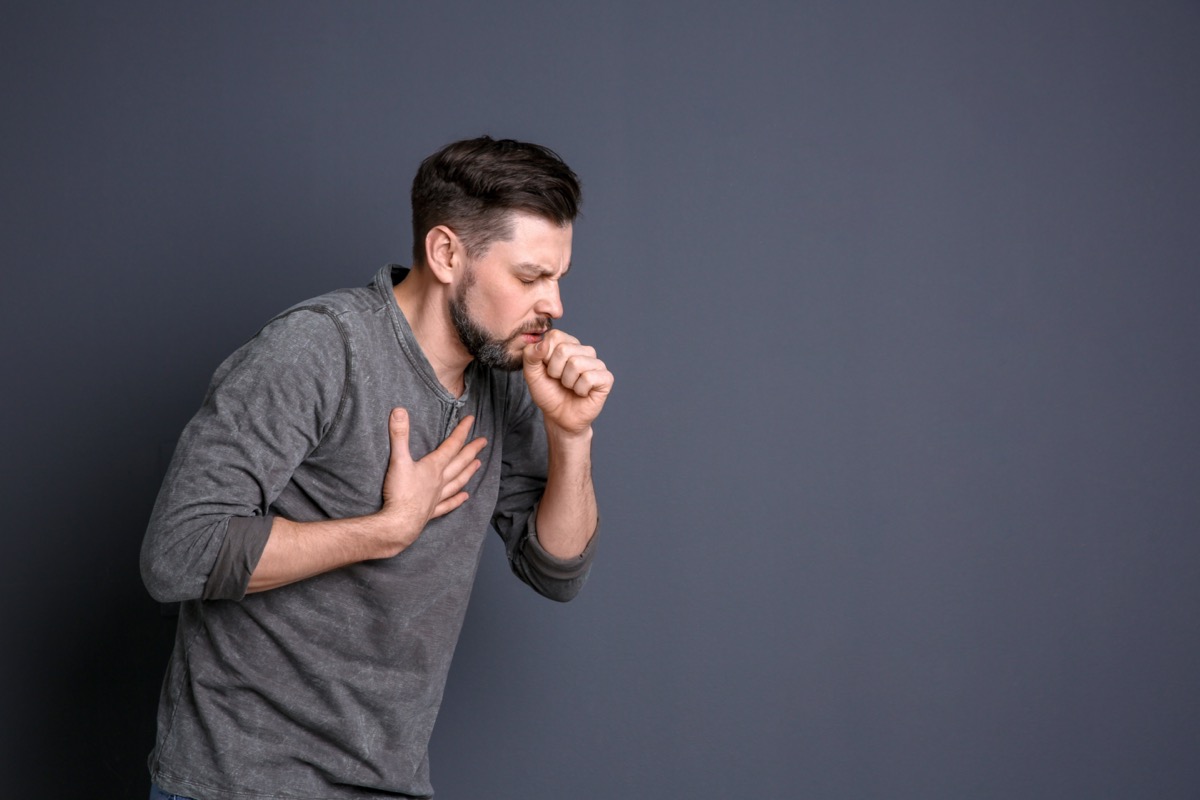
A lingering cough can be a side effect of any type of cold, flu, or illness. According to a study conducted by the World Health Organization (WHO) on Chinese COVID-19 patients, 61.7% developed a dry cough. As a respiratory virus, the cough associated with COVID-19 may take a long time to go away because your body is attempting to get rid of lingering mucus and phlegm.

Chest pain or pressure was a common lingering COVID-19 symptom among survey participants. Since coronavirus affects the lungs and respiratory system, this chest pain may be attributed to the virus still settling in the body. According to the Mayo Clinic, sudden, sharp chest pains are referred to as pleurisy and it may indicate that the lung walls are inflamed. Pleurisy may be a sign of pneumonia or another type of infection, so recovered COVID-19 patients should see a doctor if this symptom persists.
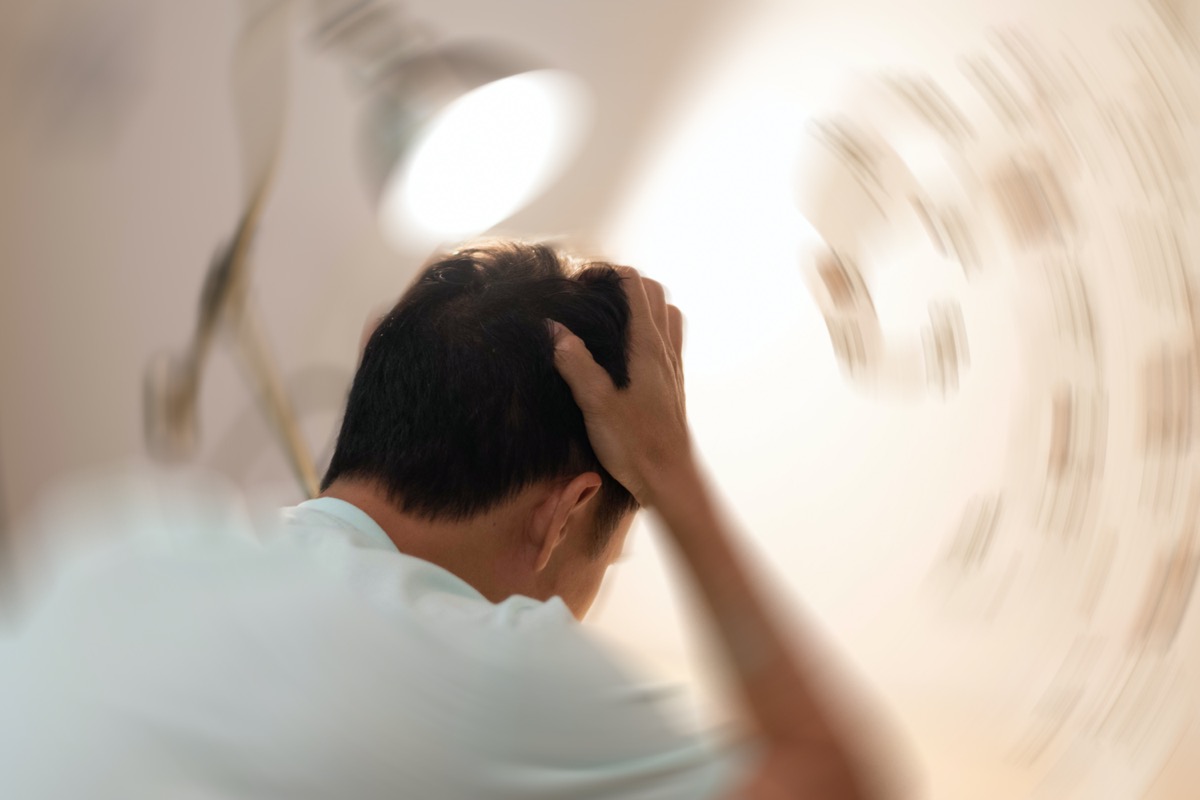
COVID-19 is a respiratory virus that also has nervous system side effects. According to a study published in the Journal of the American College of Emergency Physicians Open, “symptoms including headache, dizziness, vertigo, and paresthesia have been reported.” This may be due to decreased oxygen levels, dehydration, fevers, or headaches also caused by the virus.

A paper published in the Journal of Alzheimer’s Disease analyzes potential long-term neurological effects of COVID-19 on patients who experienced severe cases. Memory problems and cognitive decline are potential side effects for some of these patients. Since the virus affects the nervous system, memory problems may be a lingering side effect for some patients, especially those who suffered severe cases.

According to a poll conducted by the American Psychiatric Association, about 36% of Americans feel coronavirus has had a serious impact on their mental health. Between quarantining, social isolation, and worry about developing a severe case of coronavirus, it’s no wonder anxiety is a lingering symptom for COVID-19 patients.

Sleep is crucial because it keeps the immune system functioning properly, heightens brain function, stabilizes mood, and improves mental health. 782 survey respondents claimed they were having difficulty sleeping, even after recovering from COVID-19. This lack of sleep may be due to anxiety or worry about the virus or may be attributed to other lingering symptoms, such as muscle pain or cough. Setting specific bedtimes and only using your bed for sleep may help with these difficulties.

According to Dr. Sandhya Mehla with the Hartford HealthCare Headache Center, “It is estimated that headache is a symptom of COVID-19 in about 13% of patients with COVID-19. It is the fifth most common COVID-19 symptom after fever, cough, muscle aches, and trouble breathing.”

After recovering from COVID-19, some patients find it hard to exercise or be active, even if they were fit before contracting the virus. 916 survey participants reported that they were still unable to exercise after recovering from coronavirus. According to a study published in JAMA Cardiology, researchers recommend that patients who suffered from severe cases of COVID-19 wait at least two weeks before resuming light exercise. This allows time for doctors to see if heart or lung conditions develop that could make it dangerous to engage in physical activity.

The long-term effects of COVID-19 are unknown since the virus is so new but researchers are seeing certain neurological effects on patients who have recovered. Studies conducted in Wuhan analyzed these neurological conditions and found that 40% of the patients analyzed experienced confusion and conscious disturbance. This is commonly referred to as “brain fog” and many patients express feeling this way while recovering from coronavirus.

According to John Hopkins Medicine, shortness of breath is when you feel like you can’t get enough air or your chest is tight. Most people feel this way after exercising or if they’re experiencing a panic attack. However, patients with COVID-19 may feel shortness of breath without even moving since it’s a common symptom of the virus.

Body aches are a common symptom of many illnesses, including coronavirus. In this survey, 1,048 participants reported feeling these body aches after their COVID-19 diagnosis. According to Dr. Tania Elliott, MD FAAAAI, FACAAI, “Your body aches when you have the flu because your immune system is revving up to fight infection.” It’s not necessarily the virus that causes these aches but your body’s own reaction to the virus invasion.
RELATED: 23 Places You’re Most Likely to Catch the New COVID Variant

Fatigue was the most common lingering symptom of coronavirus. According to a study conducted by the WHO, the average recovery time for mild coronavirus cases is around two weeks but three to six weeks for severe or critical cases. Lingering fatigue may be a sign that your body is still fighting the virus or is recovering from the fight.
If you experience any of these conditions, it may or may not be COVID-19—contact a medical professional immediately. Stay healthy and keep others healthy, too: Wear your face mask in areas where the new variant is spreading, get tested if you think you have coronavirus, avoid crowds (and bars, and house parties) and practice social distancing as cases rise.














